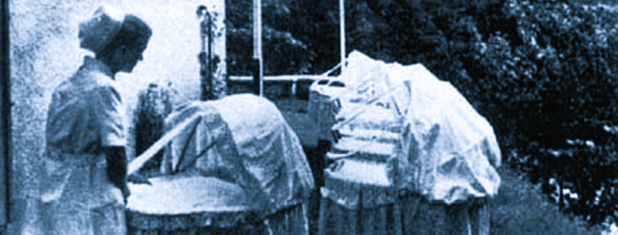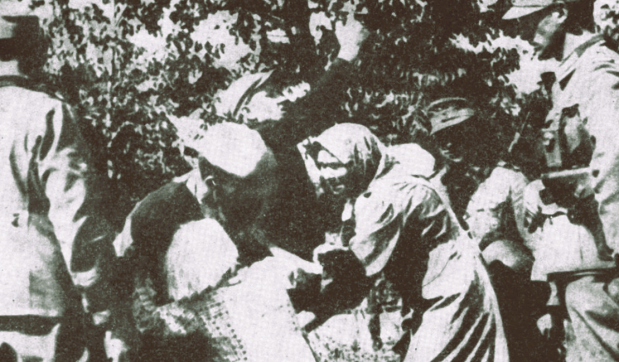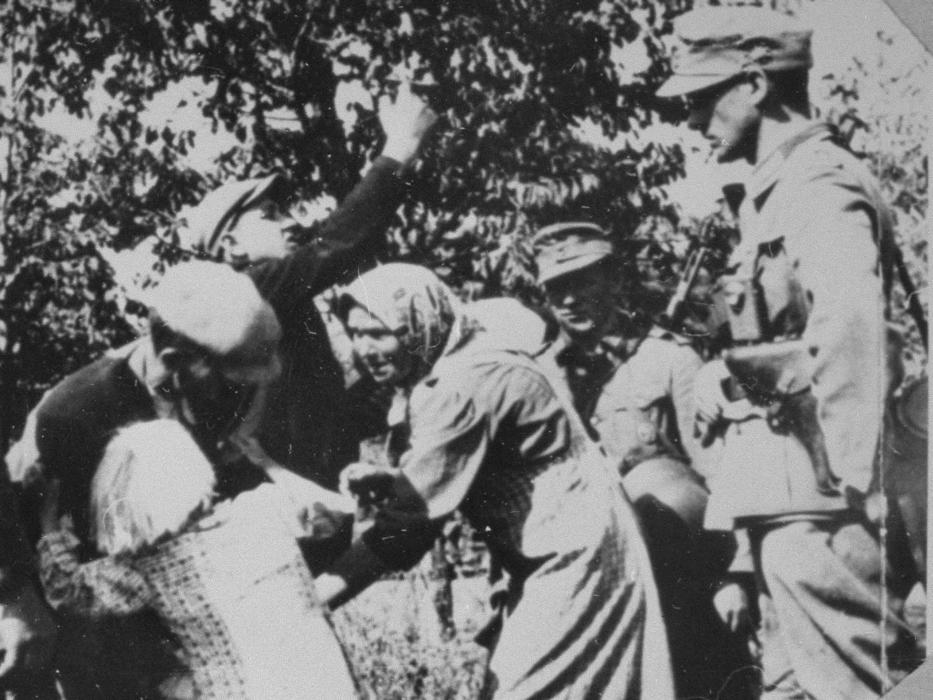Now with the Olympic Games in Rio at full swing it is a great opportunity to have a closer look at the other Rio de Janeiro, even though it bears mentioning that it has nothing to do with sports nor the 2nd largest city in Brasil.

MS Rio de Janeiro was a German steam ship and a cargo ship, owned by the shipping company Hamburg Süd and home ported in Stettin. She was launched on 3 April 1914 as Santa Ines and later renamed Rio de Janeiro. Before World War II she carried passengers and freight between Germany and South America.
She was requisitioned by Nazi Germany’s Kriegsmarine for transportation of troops on 7 March 1940, before Operation Weserübung, the invasion of Norway and Denmark, began on 9 April 1940.
The secret plan for the ship was to arrive at Bergen right after German troops had captured the town.

On board Rio de Janeiro there were a total of 50 crew and 330 soldiers. Her cargo consisted of six 2 cm FlaK 30 and four 10.5 cm FlaK 38 anti-aircraft guns, 73 horses, 71 vehicles and 292 tons of provisions, animal feed, fuel and ammunition.
The ship left Stettin on 6 April 1940 at 3 AM. Two days later, at 11.15, only hours before the attack on Norway began, a surfaced submarine was sighted off Lillesand. At first it was thought to be a German submarine, but it turned out to be the Polish submarine ORP Orzeł, serving under British command.
It had 85 A written on the tower. The submarine signalled for Rio de Janeiro to stop, and the order was followed.Captain Grudzinski, of the Polish Navy, then ordered the ship to surrender or it would be sunk, but nothing happened.

The Polish submarine then torpedoed the ship, and she took in water and began sinking. The crew and soldiers on board began to jump into the sea. At 12.00, an aircraft from the Royal Norwegian Navy Air Service started circling around the sinking ship. At 12.50 the submarine torpedoed the ship a second time, from a submerged position. The torpedo hit the ammunition depot, which caused an explosion. About 180 survived the sinking, and were rescued from the sea and brought by local vessels to Lillesand and Kristiansand; roughly 200 died.
Later, on the 8th of April 1940, word of the Rio de Janeiro’s sinking reaches the newspaper office in the town of Lillehammer (today, as then, a popular skiing destination).
Outside the newspaper office, someone on the news staff posts a handwritten note about the sinking. And … there is more to report. German ships have been seen moving in the waters around Denmark.
Norwegian officials were told by survivors that the ship’s destination had been Bergen. The fact that there were horses on board and that many of the dead and survivors were wearing military uniforms, led to alerting of the central authorities. However, the government did not realize that a German invasion was imminent.
Through neglect both on the part of the Norwegian foreign minister Halvdan Koht and minister of defence Birger Ljungberg, Norway was largely unprepared for the German military invasion when it came on the night of 8–9 April 1940.
A major storm on 7 April resulted in the British Navy failing to make material contact with the German shipping.Consistent with Blitzkrieg warfare, German forces attacked Norway by sea and air as Operation Weserübung was put into action. The first wave of German attackers counted only about 10,000 men. German ships came into the Oslofjord, but were stopped when the Krupp-built artillery and torpedoes of Oscarsborg Fortress sank the German flagship Blücher and sank or damaged the other ships in the German task force.

Blücher transported the forces that would ensure control of the political apparatus in Norway, and the sinking and death of over 1,000 soldiers and crew, delayed the Germans, so that the King and government had the chance to escape from Oslo. In the other cities that were attacked, the Germans faced only weak or no resistance. The surprise, and the lack of preparedness of Norway for a large-scale invasion of this kind, gave the German forces their initial success.
It was originally thought by the German High Command that having Norway remain neutral was in its interest. As long as the Allies did not enter Norwegian waters, there would be safe passage for merchant vessels travelling along the Norwegian coast to ship the ore that Germany was importing.
Großadmiral Erich Raeder, however, argued for an invasion. He believed that the Norwegian ports would be of crucial importance for Germany in a war with the United Kingdom.
On 14 December 1939, Raeder introduced Adolf Hitler to Vidkun Quisling,

a pro-Nazi former defence minister of Norway. Quisling proposed a pan-German cooperation between Nazi-Germany and Norway. In a second meeting four days later on 18 December 1939, Quisling and Hitler discussed the threat of an Allied invasion of Norway.
After the first meeting with Quisling, Hitler ordered the Oberkommando der Wehrmacht (OKW) to begin investigating possible invasion plans of Norway.Meeting Quisling was central in igniting Hitler’s interest in conquering the country.The first comprehensive German plan for the occupation of Norway,Studie Nord, ordered by Hitler on 14 December 1939, was completed by 10 January 1940. On 27 January, Hitler ordered that a new plan, namedWeserübung, be developed. Work on Weserübung began on 5 February.
The major Norwegian ports from Oslo northward to Narvik (more than 1,200 mi (1,900 km) away from Germany’s naval bases) were occupied by advance detachments of German troops, transported on destroyers. At the same time, a single parachute battalion took the Oslo and Stavanger airfields, and 800 operational aircraft overwhelmed the Norwegian population. Norwegian resistance at Narvik, Trondheim (Norway’s second city and the strategic key to Norway), Bergen, Stavanger, and Kristiansand was overcome very quickly; and Oslo’s effective resistance to the seaborne forces was nullified when German troops from the airfield entered the city. The first troops to occupy Oslo entered the city brazenly, marching behind a German military brass band.

On establishing footholds in Oslo and Trondheim, the Germans launched a ground offensive against scattered resistance inland in Norway. Allied forces attempted several counterattacks, but all failed. While resistance in Norway had little military success, it had the significant political effect of allowing the Norwegian government, including the royal family, to escape. The Blücher, which carried the main forces to occupy the capital, was sunk in the Oslofjord on the first day of the invasion. An improvised defence at Midtskogen also prevented a German raid from capturing the king and government.
Norwegian mobilisation was hampered by the loss of much of the best equipment to the Germans in the first 24 hours of the invasion, the unclear mobilisation order by the government, and the general confusion caused by the tremendous psychological shock of the German surprise attack. The Norwegian Army rallied after the initial confusion and on several occasions managed to put up a stiff fight, delaying the German advance. However, the Germans, quickly reinforced by panzer and motorised machine gun battalionsproved unstoppable due to their superior numbers, training, and equipment. The Norwegian Army therefore planned its campaign as a tactical retreat while awaiting reinforcements from Britain.
The British Navy cleared the way to Narvik on 13 April, sinking one submarine and 8 destroyers in the fjord. British and French troops began to land at Narvik on 14 April. Shortly afterward, British troops were landed also at Namsos and at Åndalsnes, to attack Trondheim from the north and from the south, respectively. The Germans, however, landed fresh troops in the rear of the British at Namsos and advanced up the Gudbrandsdal from Oslo against the force at Åndalsnes. By this time, the Germans had about 25,000 troops in Norway.

By 23 April, there was open discussions about evacuation of Allied troops, on 24 April Norwegian troops, supported by French soldiers failed to stop a panzer advance. On 26 April the British decided to evacuate Norway.
Three things had forced the Cabinet and the Chiefs-of-Staff to withdraw from Norway.
- The British troops in Norway were all from infantry units and other units with different skills were needed in Norway, particularly artillery units.
- The Germans threatened to cut off the British troops in Norway – loosing so many men would have had serious consequences, both militarily and psychologically, at such an early stage of the war.
- The Germans dominated the air giving them complete superiority in both aerial attack and defence.

Britain only had access to long range Blenheim bombers and fighters carried on Britain’s aircraft carriers. The Fleet Air Arm’s Skuas which had succeeded in attacking the ‘Königsberg’ had been pushed to the very limits of their endurnace. German fighters and bombers could fly from the relative security of their bases in northern Denmark. Refueling and rearming them was an easy process. German planes could spend time over Norway while the planes that Britain had could not – an ironic turnaround compared to the Battle of Britain.
By 2 May, both Namsos and Åndalsnes were evacuated by the British. On 5 May, the last Norwegian resistance pockets remaining in South and Central Norway were defeated at Vinjesvingen and Hegra Fortress.
In the north, German troops engaged in a bitter fight at the Battle of Narvik, holding out against five times as many British and French troops, they were close to rebellion when finally slipping out from Narvik on 28 May. Moving east, the Germans were surprised when the British started to abandon Narvik on 3 June. By that time the German offensive in France had progressed to such an extent that the British could no longer afford any commitment in Norway, and the 25,000 Allied troops were evacuated from Narvik merely 10 days after their victory. King Haakon VII and part of his government left for England on British cruiser HMS Glasgow to establish the Norwegian government-in-exile.
Fighting continued in Northern Norway until 10 June, when the Norwegian 6th Division surrendered shortly after Allied forces had been evacuated against the background of looming defeat in France. Among German-occupied territories in Western Europe, this made Norway the country to withstand the German invasion for the longest period of time – approximately two months.
Hitler garrisoned Norway with about 300,000 troops for the rest of the war. By occupying Norway, Hitler had ensured the protection of Germany’s supply of iron ore from Sweden and had obtained naval and air bases with which to strike at Britain.
At the beginning of the occupation, there were at least 2,173 Jews in Norway. At least 775 of these were arrested, detained, and/or deported. 742 were sent to concentration camps, 23 died as a result of extrajudicial execution, murder, and suicide during the war; bringing the total of Jewish Norwegian dead to at least 765, comprising 230 complete households. In addition to the few who survived concentration camps, some also survived by fleeing the country, mostly to Sweden, but some also to the United Kingdom.

Of the Norwegians who supported the Nasjonal Samling party,

relatively few were active collaborators. Most notorious among these was Henry Oliver Rinnan, the leader of the Sonderabteilung Lola (locally known as Rinnanbanden or “the Rinnan group”), a group of informants who infiltrated the Norwegian resistance, hence managing to capture and murder many of its members.

Furthermore, about 15,000 Norwegians volunteered for combat duty on the Nazi side; of the 6,000 sent into action as part of the Germanic SS, most were sent to the Eastern front.

During the five-year occupation, several thousand Norwegian women had children fathered by German soldiers in the Lebensborn program. The mothers were ostracised and humiliated after the war both by Norwegian officialdom and the civilian population, and were called names such as tyskertøser (literally “whores/sluts of [the] Germans”).[9] Many of these women were detained at internment camps such as the one on Hovedøya, and some were even deported to Germany. The children of these unions received names like tyskerunger (children of Germans) or worse yetnaziyngel (Nazi spawn). The debate on the past treatment of these krigsbarn (war children) started with a television series in 1981, but only recently have the offspring of these unions begun to identify themselves. Fritz Moen, the victim of the only known dual miscarriage of justice in Europe, was the child of a Norwegian woman and a German soldier, as was ABBA member Anni-Frid Lyngstad.
Forgotten History- ABBA and WW2
Even before the war ended, there was debate among Norwegians about the fate of traitors and collaborators. A few favored a “night of long knives” with extrajudicial killings of known offenders. However, cooler minds prevailed, and much effort was put into assuring due process trials of accused traitors. In the end, 37 people were executed by Norwegian authorities: 25 Norwegians on the grounds of treason, and 12 Germans on the grounds of crimes against humanity. 28,750 were arrested, though most were released for lack of evidence. In the end, 20,000 Norwegians and a smaller number of Germans were given prison sentences. 77 Norwegians and 18 Germans received life sentences. A number of people were sentenced to pay heavy fines.
Quisling was executed by firing squad at Akershus Fortress at 02:40 on 24 October 1945.His last words before being shot were, “I’m convicted unfairly and I die innocent.”After his death his body was cremated, leaving the ashes to be interred in Fyresdal.
The trials have been subject to some criticism in later years. It has been pointed out that sentences became more lenient with the passage of time, and that many of the charges were based on the unconstitutional and illegal retroactive application of laws






































You must be logged in to post a comment.